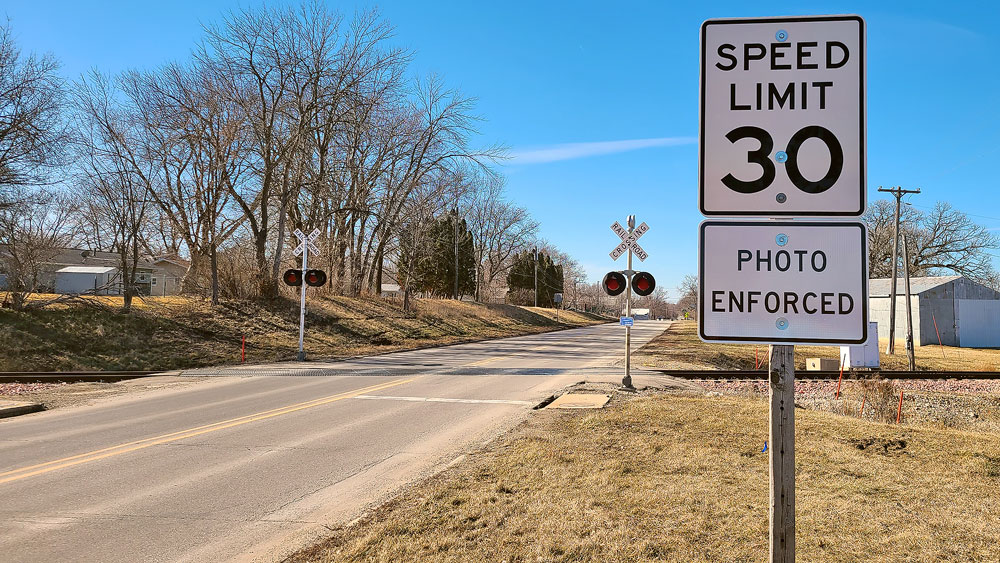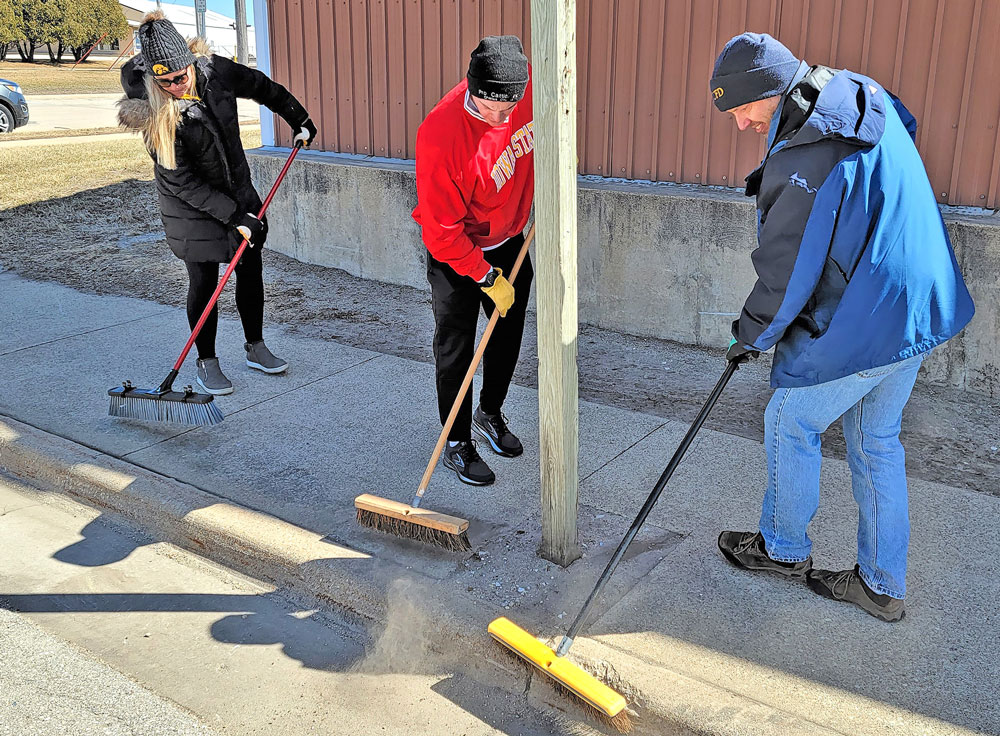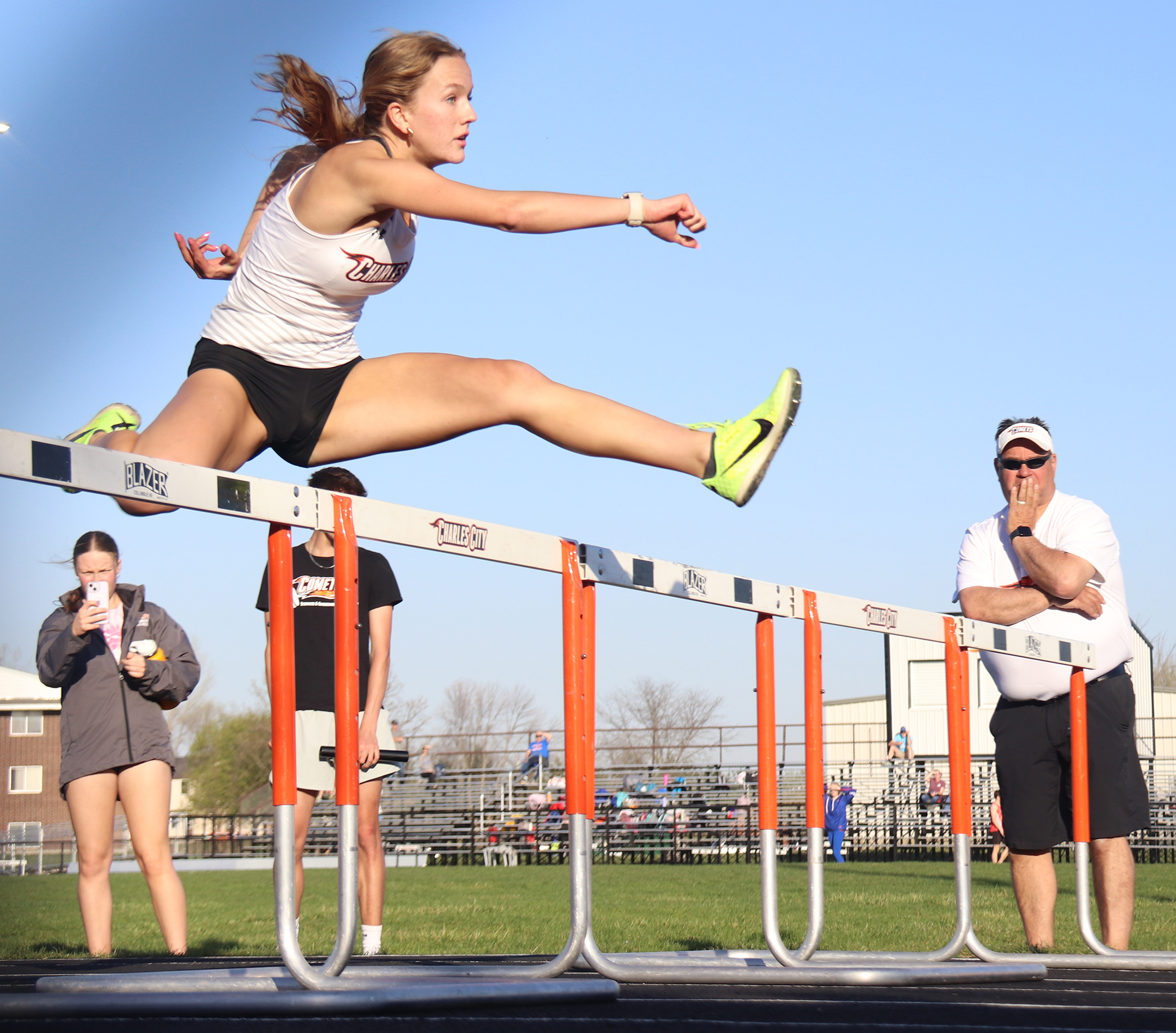Fall Home & Car Care: Tips to help beat the winter car care blues and avoid deer collisions

By Kelly Terpstra, kterpstra@charlescitypress.com
Be vigilant.
That’s Dave Huffman’s advice when driving around this fall.
Hufman, owner of Huffman Auto Body in Charles City, has seen his fair share of car accidents related to deer crossing the road.
He recommends drivers keep their eyes on the road and be aware of deer in the ditch, especially at certain hours.
“They’re most active an hour before sunset and an hour before sunrise,” said Huffman.
Huffman, whose collision repair shop has been in business since 1983, said around 40 percent of his fixes to damage done to automobiles is related to deer colliding with vehicles. He said the average repair cost is $5,000, depending on how old the car is as well as the make and model.
Huffman said he generally works on 80 to 100 vehicles a year that have been sidelined from the roadways by deer collisions. A small deer hit can cost $1,000 and extensive damage can run up to $15,000 for newer or more expensive vehicles that he’s worked on.
He also said it doesn’t take much for a vehicle to be “totaled” because the damage exceeds the estimated value of the car, van or truck.
Airbags being deployed during a deer collision can smash out windshields and take out the dash. Sometimes sensors, diagnostic units and seat belts need to be repaired or replaced.
“Because of airbag systems, more and more cars are being totaled out that otherwise would have been repairable,” said Huffman.
Deer are on the move in the early morning hours and at dusk. When waking up, deer feed, then bed down during the day. At night, they’ll eat again and travel to where they’ll sleep in the evening.
Huffman said driving out on the highway during rut season is especially dangerous. The rut – the mating season for bucks – is at peak season for whitetail deer for about three weeks in October and November. Bucks are constantly on the move, looking to mate with as many does as possible. This means the buck is less cautious and more susceptible to getting hit by vehicles.
There are deterrents out there that can sometimes help prevent paying thousands of dollars for repair jobs after a deer has slammed into your ride.
Huffman uses fog lights on his truck that are pointed outward toward the ditches so he can see deer more clearly.
He said deer whistles or horns, which are mounted on vehicles and can emit a sound to help prevent car-deer collisions, are not always reliable. They can get plugged up with dirt, sand or bugs. That can give drivers a false sense of security because they think the whistles are working, when they’re not.
“Some people swear by them. We’ve got a standing joke in the auto body business — ‘We’ll put free deer whistles on, but if we turn them the other way, they’ll call them in instead of scare them away,” Huffman smiled.
Huffman said in some cases deer will stop and listen to the whistle.
“It will freeze them so they don’t come out in front of you,” Huffman added. “They’re not a silver bullet.”
As the mercury dips, Huffman said implementing generalized good practice to keep your car or truck running is recommended if you don’t want to experience a breakdown and be stranded on the side of the road.
Keeping tabs on the vehicle’s electrical system and how that is running is a wise choice, Huffman said.
That means owners of vehicles should make sure their battery is running properly. Checking or testing starters and alternators is also a good idea, he said.
“If you’ve got a four- or five-year old battery and you’re headed into winter, it’s going to be a bad winter. Most batteries they start really getting at their tipping point right about four, five years old,” said Huffman.
Huffman said this also goes for your car’s cooling system. That means flushing old antifreeze, especially if the car sits outside for long periods of time.
If proper maintenance isn’t done, the money spent on fixing a much larger problem down the road can put a serious dent in one’s pocketbook.
“We’ve seen a lot of gas lines freeze up. It’s rare (now) because of the alcohol that’s in them now, but it can happen and can cause periodic problems,” said Huffman.
Huffman also offered the advice to check tire pressure every two to three weeks during the winter.
With street and road crews battling snow and ice, sand and salt will find their way onto your vehicle. The result of exposure to salt can lead to corrosion and rust.
Huffman said giving your vehicle a full underbody car wash is probably the best thing you can do to prevent rust damage to the body of your vehicle.
“There is only so much you can do because there’s so many hidden cavities,” he said.
Huffman added that the quality of the metal that a car is made out of will also affect whether it resists rust or not.
“A lot of people think waxing it and stuff helps prevent rust. It doesn’t,” said Huffman. “The only thing waxing does is help it clean up easier. Road grime and salt doesn’t stick to it.”
Huffman Auto Body has earned I-CAR Gold Class status for continued advanced training in all areas of professional collision repair and is certified by the ASE (Automotive Service of Excellence) for continued training. Huffman Auto Body is also trained and certified in the application of Sherwin Williams Automotive Finishes while providing OEM professional color matching and Life Time Warranty.
Huffman Auto Body is located at 1000 5th Avenue in Charles City.








Social Share